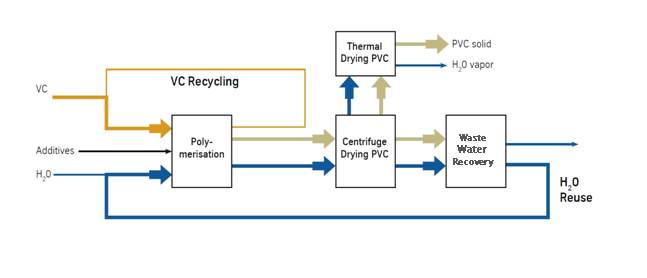WASTE WATER RECOVERY
Suspension PVC is produced in an aqueous process. Approx. 2.3 m3 of precious water are used in a conventional process per ton of PVC. Up to now this water could only be used for flushing purposes, but the demand for flush water in the downstream units is small compared with the water demand for polymerization. So the water is usually discharged after treatment in a biological waste water treatment to a recipient.
Re-use of the waste water in the polymerization was so far inhibited by quality problems caused by the residual PVC solid content. But today the required purity can be achieved by a tailor-made special filtration process.
Ultra filtration
Ultra filtration is employed to remove any solids from the decantation waste water. Ceramic membranes compatible with the other ingredients in the waste water are used in the process. The PVC contaminated waste water from the decantation centrifuge is treated in the special filtration unit. The treated water is free of PVC solids and is recycled into the polymerization process in order to reduce the consumption of fresh de-mineralized water and at the same time the amount of waste water. The flux through the membranes can be preserved on an acceptable level by regular cleaning operations for at least 1 year.

The advantages of the Vinnolit process can be summarized as follows:
- Reduction of fresh water consumption to approx. 1.4 m3/ton PVC (pipe grade)
- Reduction of waste water
- Proven in production scale for pipe grade
